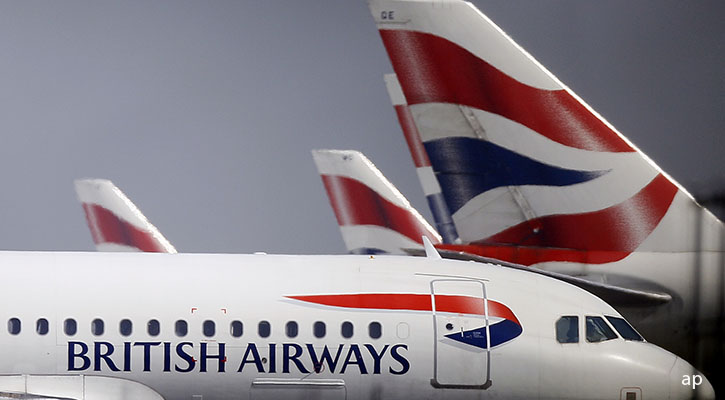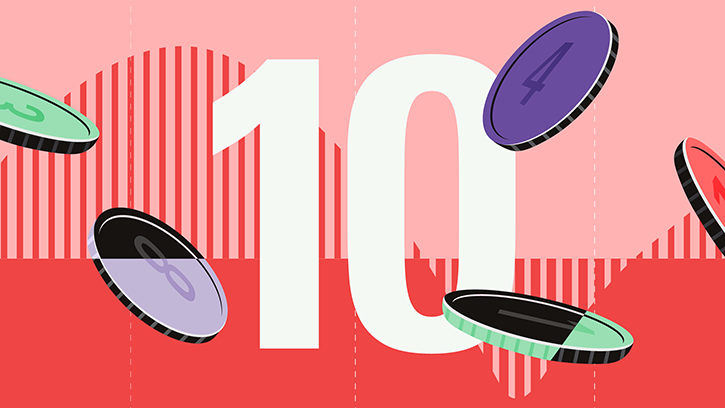
We initiate coverage of International Airlines Group (IAG) with no moat and a fair value estimate of 224p per share, supported by robust travel demand, gradual capacity recovery, and enhanced operational efficiency, leading to improved profitability and cash flow generation.
In the wake of the pandemic, European airlines, including IAG, have achieved record-high passenger revenue yields. In 2023, IAG's revenue yield per revenue passenger kilometer (RPK) reached EUR 9.36 cents, up from EUR 7.86 cents in 2019.
Total revenue yields per available seat kilometers increased from EUR 8.93 cents in 2019 to EUR 10.68 cents in 2023.
Key Morningstar Metrics for IAG
• Fair Value Estimate: GBX 224
• Morningstar Rating: ★★★★
• Economic Moat: None
• Morningstar Uncertainty Rating: High
This increase was driven by strong travel demand, with RPK growth outpacing available seat kilometres (ASK) because of constrained aircraft supply and airlines' ability to pass on cost increases to customers. We expect IAG’s outlook to remain positive in the midterm, with RPKs projected to reach 125% of 2019 levels by 2028. However, the industry will face economic headwinds due to ongoing supply chain issues and increased operational expenses, especially labour costs and interest rates for debt servicing. We anticipate IAG's revenue yields will gradually decline to precovid levels by 2028 because of increased competition, which will pressure fares as plane and crew shortages ease. We project ASK to grow at a CAGR of 5% over our forecast period, compared with RPK growth at a CAGR of 4.9%.
In 2023, IAG’s revenue per passenger kilometers reached 95.7% of 2019 levels, and we expect them to surpass 2019 levels in 2024, growing at a CAGR of 5.4% through 2028. This growth is driven by strategic investments in fleet modernisation, increased aircraft utilisation, and a focused expansion in key profitable markets such as the North Atlantic and Latin America.
The company is optimising its cost structure through a transformation programme that includes investing in more fuel-efficient aircraft and increasing labour cost predictability and stability through multiyear agreements with labor unions. Over the next five years, IAG plans to replace 140 planes with new, 20%-40% more fuel-efficient models. The updated fleet should also drive lower training and maintenance costs. We expect IAG’s outlook to remain positive in the midterm, with RPKs projected to reach 125% of 2019 levels by 2028.
Fair Value and Profit Drivers
We assign a fair value estimate of GBX 224 per share to IAG, supported by robust travel demand, gradual capacity recovery, and enhanced operational efficiency, leading to improved profitability and cash flow generation.
In the wake of the pandemic, European airlines, including IAG, have achieved record-high passenger revenue yields. In 2023, IAG's revenue yield per revenue passenger kilometer reached EUR 9.36 cents, up from EUR 7.86 cents in 2019. Total revenue yields per available seat kilometers increased from EUR 8.93 cents in 2019 to EUR 10.68 cents in 2023. This increase was driven by strong travel demand, with RPK growth outpacing ASK because of constrained aircraft supply and airlines' ability to pass on cost increases to customers. We think that revenue yields will gradually decline to precovid levels by 2028 because of increased competition, which will pressure fares as plane and crew shortages ease.
We project ASK to grow at a CAGR of 5% over our forecast period, compared with RPK growth at a CAGR of 4.9%.
IAG's Economic Moat
We do not believe that International Airlines Group has an economic moat. IAG operates as a European network carrier with major hubs in London Heathrow, London Gatwick, Madrid, Barcelona, and Dublin. Network carriers channel passenger traffic through expensive, slot-constrained airport hubs, managing numerous connecting passengers. This model necessitates a complex and varied fleet, with multiple aircraft types and cabin configurations, to address different route lengths, traffic patterns, and customer demands.
The complexity of scheduling and the need to accommodate connecting passengers often result in lower fleet utilisation and load factors compared with low-cost carriers. To counterbalance the higher unit costs, network airlines aim to generate higher unit revenue by offering a range of fare classes, including business and first class, and by codesharing partnerships with other airlines and frequent flyer programs to attract and retain passengers. Although IAG achieved a return on invested capital above its cost of capital from 2015 to 2019, we see this as untenable. Long term, IAG is likely to face the same economic pressures that challenge the broader airline industry, hindering its ability to maintain high returns consistently. The competitive dynamics of the airline industry present significant challenges for any company aiming to achieve long-term economic profits.
IAG's Financial Strength
IAG entered the covid-19 pandemic with relatively lower debt levels than peers, and by 2023 had reduced its net debt by over £ 3 billion since the peak in 2021. The company has repaid a significant portion of its variable debt, including EUR 2 billion of UKEF-backed debt for British Airways and EUR 800 million of ICO debt for Iberia, reducing its exposure to variable interest rates and financial volatility. Currently, 83% of gross debt is related to aircraft financing and the remaining non leasing-related debt is spread over the next six years, with most of it maturing from 2026 onward. Additionally, IAG's pension fund for British Airways is now in technical surplus, eliminating the need for further contributions in the near term.
As of the first half of 2024, the group had a net debt position of £6.4 billion and total liquidity of approximately £13.2 billion, composed of £9 billion in cash and £4 billion in facilities. This strong liquidity ensures the company can manage its debt obligations spread over the next six years effectively. IAG targets a net debt/ EBITDA ratio of less than 1.8 times through economic cycles. Currently, this ratio stands well below the target at 1.1 times, down from 1.8 times at the end of 2023, demonstrating the company's prudent financial management.
Capital Allocation
We assign IAG a Standard Capital Allocation Rating, based on a strong balance-sheet rating, a fair shareholder distribution rating, and a fair investments rating. IAG is committed to delivering shareholder returns. From 2013 to 2019, the group has returned around EUR 4.3 billion excess capital to shareholders via share repurchases and dividends, while maintaining a prudent capital structure. As of second-quarter 2024, the company has reinstated dividend payments, with an interim payment of $0.03 per share.
The group is dedicated to improving cost efficiency and maximising returns on invested capital, which has historically resulted in margins and ROICs that significantly surpass those of its competitors, with the company delivering ROICs higher than its cost of capital from 2015 to 2019. We expect the company to continue investing in initiatives that drive cost savings and fleet optimisation. For example, the company is currently engaged in an ongoing transformation program that is expected to further improve margins by optimising fleet utilisation, minimising maintenance costs, and capitalizing on economies of scale within the group. By centralising maintenance operations across its various airlines, IAG ensures more efficient use of resources and maintains consistent service quality through shared facilities and standardised procedures.
Bulls Say
• The group's higher margins and lower debt levels afford it more flexibility than peers to deal with the current downturn.
• Fleet rationalisation investments will result in a less complex, more flexible and efficient asset base.
• Utilising a high share of leased aircraft in its fleet gives the group greater flexibility in managing capacity during the uncertain demand environment.
Bears Say
• The group’s high exposure to high-margin business travel may see margins come under pressure if business related travel stays persistently below pre-covid-19 levels.
• Amid very strong demand and constrained capacity, IAG may face challenges delivering on its premium cabin.
• European low-cost airlines with aggressive growth ambitions and better cost structures could seize the opportunity to take share on the group’s most profitable short-haul intra-European routes.





























